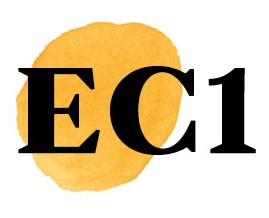Don’t tell everyone, but the Royal’s favourite stationer is based in Clerkenwell. The EC1 Echo goes to visit Barnard and Westwood
By Oliver Bennett

Whatever one’s thoughts on the monarchy, Queen Elizabeth II’s funeral in September at Westminster Abbey was a big deal – and providing the 22-page order of service for the ceremony is a great boost for any company.
So it was good that the task went to Clerkenwell’s own Barnard and Westwood: an unassuming luxury printing company near Mount Pleasant that just happens to have had the Royal Warrants for printing and bookbinding since 1986. As befits its sense of discretion it’s hard to find.
“We keep a low profile even though we’re over 100 years old” said Alasdair Abrines, sales and marketing director. Barnard and Westwood was set up in 1921 by printer Albert Reginald Barnard and 100 years later, was bought by retailer Maurice Bennett, after the pandemic put a spoke in business. Now it thrives, continuing Clerkenwell’s fine old tradition of being an area renowned for printing and the graphic arts.
Although the company prefers to stay under the radar, Alasdair was clearly pleased to find that following the royal funeral the New York Times covered his company (memorably, the article described Clerkenwell as ‘a neighborhood about three miles northeast of Westminster Abbey’).
Here, off a residential street on the way towards King’s Cross, next to a prop-making firm, they run upwards of 20 printing machines of all types – from whispering modern digital jobs to lovely old iron Heidelbergs, including one die-stamping machine that’s older than the company itself. The work B&W does covers all kinds of luxurious and important occasions: wedding invitations, condolences, gifts, letters. It prints for Westminster Abbey, the City’s churches and Livery Companies – the deepest traditional institutions – alongside brands such as Hunter, Bentley, Paul Smith, Burberry, Claridges and Fortnum & Mason. What they’re all after is the sense of detail: embossed cards with gold edges, presentation boxes tied with ribbons, anything that needs to make a real splash.
And the Royals, of course. B&W made the invitations for Prince William and Kate in 2011 and Prince Harry and Meghan Markle in 2019 – and the order of service for the funeral of Princess Diana. It has also made stationery for several monarchs and maharajas across the world, but are so committed to confidentiality that they’ll keep the proofs under lock and key. This means that B&W isn’t a cheap copy shop.
The stationery starts at about £350 for 100 engraved letterheads and can run up to about £12,000 for a premium wedding stationery suite for 100 guests. At the same time, they use skilled labour – the company has 15 staff, and takes on apprentices – and these items are normally kept as memorabilia and even heirlooms, a niche that the company augments by offering custom binding for old books and photo albums. In an era where print is supposedly dying, how does a company like B&W do it?
“The reality is that print is by no means dead,” says Alasdair. “But the digital world has forced businesses like ours to move with the times, so we’ve reimagined our business model to mix the digital with luxury print.” The smartest invite can carry a QR code, while the repertoire includes every conceivable printing style and finish from letterpress to foil blocking, die stamping, embossing, gilding, hand finishing and box-making – and they’ve done experimental work with artist and designer Gary James McQueen, a nephew of Alexander McQueen. A fashion for weddings is to use cotton-heavy paper with hand-torn edges and letterpress printing, for that raw look.
“It’s not just about pressing ‘send’,” says Alasdair. Some forms that had been expected to die out, such as the business card, have been coming back, and as the firm is close to Mount Pleasant, which has the biggest post office in London, it’s good to hear that they’ll also make a bespoke Christmas card – and not necessarily at royal prices.
Visit barnardandwestwood.com









